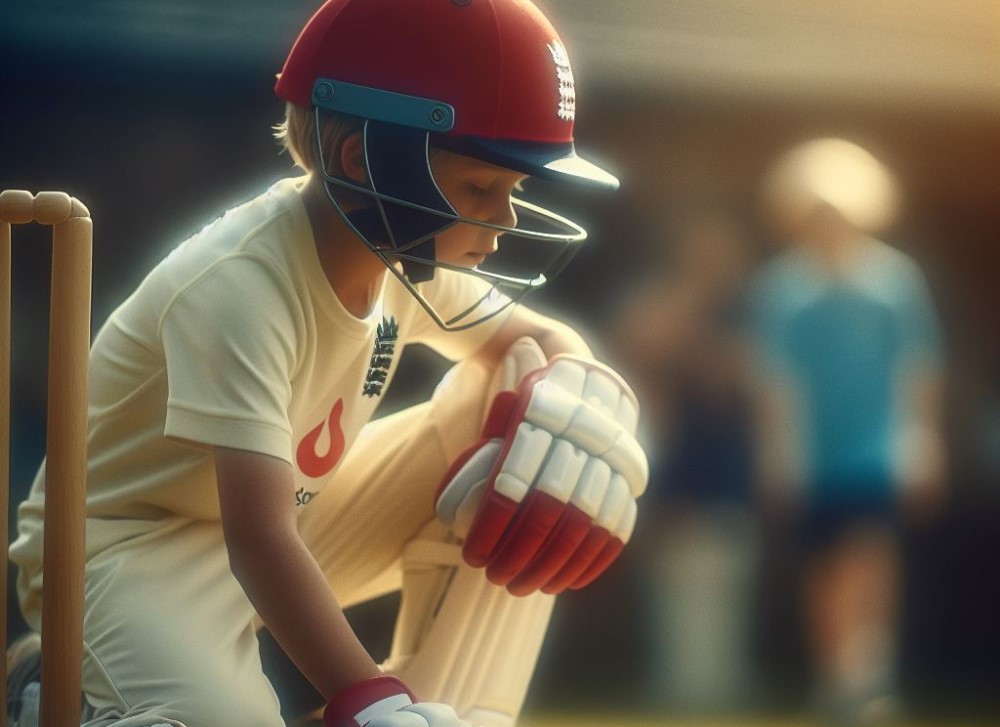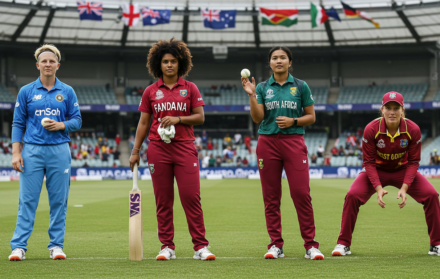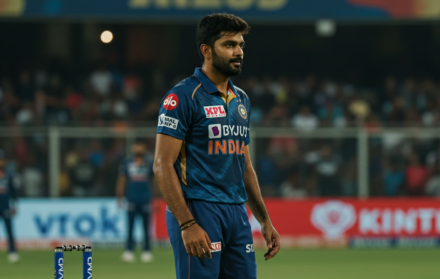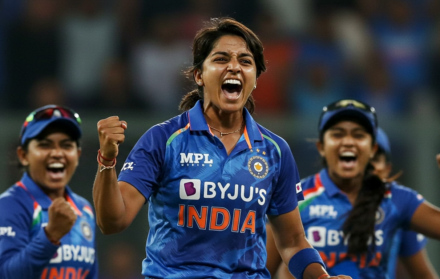
Basic Rules and Terminology of Cricket for Kids
Cricket is a popular sport that originated in England and is played by millions of people around the world. It is a bat-and-ball game that involves two teams competing against each other on a grass field. This article aims to introduce the basic rules and terminology of cricket for kids, providing them with a foundation to understand and enjoy the game.
Understanding the rules of cricket is essential to play the game correctly. The basic rules of cricket cover various aspects, including the field and equipment, the objective of the game, the teams and players, scoring runs, fielding and dismissals, bowling and wickets, innings and overs, and the role of umpires. Each of these aspects contributes to the overall gameplay and strategy of the game.
Cricket has its own set of terminology that is commonly used during matches. This includes batting terminology, bowling terminology, fielding terminology, umpiring terminology, and game strategies and tactics. Familiarizing children with these terms will help them communicate effectively and understand the game better.
Cricket is a popular sport for kids due to its unique blend of physical activity, strategic thinking, and teamwork. It helps develop various skills such as hand-eye coordination, motor skills, concentration, and decision-making abilities. Cricket provides an opportunity for children to make new friends, learn sportsmanship, and have fun in a social setting.
If your child is interested in getting started with cricket, there are various ways to get involved. They can join a local cricket club, participate in school cricket programs, or simply play with friends in their backyard. Basic equipment such as a cricket bat, ball, and stumps is required to practice and play the game.
Playing cricket offers numerous benefits for kids. It promotes physical fitness, improves mental agility, enhances teamwork and communication skills, and teaches important values such as fair play and respect for opponents. Cricket encourages children to develop discipline, perseverance, and sportsmanship, which can be applied in all aspects of their lives.
Basic Rules of Cricket

To comprehend the sport of cricket, it is crucial to grasp the Basic Rules of Cricket. Here are the regulations:
1. Every team possesses eleven players.
2. The game is played with a bat and a ball, and the aim is to score more runs than the opposing team.
3. Runs are earned by the batsmen by running between the wickets or by striking the ball to the boundary.
4. There are always two batsmen on the field, and the bowler from the opposing team attempts to dismiss them by hitting the wickets.
5. A batsman can be dismissed in various manners, such as being bowled, caught, or stumped.
6. A match is divided into innings, and both teams have the opportunity to bat and bowl.
7. Cricket encompasses different formats: Test matches, One-Day Internationals (ODIs), and Twenty20 (T20) matches.
8. In Test matches, each team has two innings, while in ODIs and T20 matches, each team has one innings.
9. Test matches endure for several days, ODIs last for one day, and T20 matches last for a few hours.
10. The team with the highest number of runs at the conclusion of the match emerges as the victor.
A solid foundation for enjoying the game of cricket is laid by comprehending these Basic Rules of Cricket.
The Field and Equipment
The field and equipment are extremely crucial in the game of cricket. They form the fundamental components of the sport and contribute greatly to its overall experience. Let’s explore in detail the main elements associated with them:
1. The Field: This is an expansive grassy area divided into different sections. The boundary is clearly demarcated by a rope, serving as a marker for scoring runs by striking the ball beyond its limits. Located at the center is the pitch, a rectangular region where the bowler delivers the ball with precision.
2. The Stumps: Positioned at each end of the pitch, three wooden poles called wickets stand tall. These stumps are held in place by two bails. The primary objective of the fielding team is to aim accurately and hit the stumps, thereby dismissing the batsman.
3. The Bat: Crafted primarily from willow, the bat is an essential piece of equipment in cricket. It features a long handle and a wider surface area designed for striking the ball. Great attention is paid to meticulously crafting bats to ensure the perfect balance and weight. Having a firm grip on the handle is crucial for executing effective shots.
4. The Ball: Typically made of leather, the cricket ball has a hard core. It is specifically engineered to swing and bounce off the pitch, making it challenging for the batsman to score runs. The ball undergoes careful shaping and maintenance to ensure fairness and integrity in the game.
5. Protective Gear: To prioritize the safety of players, various protective gear is employed. This includes helmets, pads, gloves, and an abdominal guard. These accessories offer vital protection against potential injuries during play.
Pro-tip: It is advised to familiarize oneself with the field and equipment before a match. Understanding the layout and purpose of each item will significantly enhance your cricketing experience. Remember to enjoy the game, embrace teamwork, and always uphold the principles of fair play.
The Objective of the Game

The Objective of the Game in cricket is to outscore the opposing team by striking the ball, running between the wickets, and making use of boundaries to accumulate as many runs as possible.
The team that accomplishes this objective is announced as the victor, or else the game may result in a tie if the scores are level.
Please be aware that this objective is specific to cricket and may differ from other sports.
The Teams and Players
In cricket, the Teams and Players are of utmost importance. Two teams compete against each other on a field. Each team comprises of eleven players with distinct roles and positions.
Team 1 is composed of 11 players who perform batting, bowling, and fielding. Team 2 also consists of 11 players with the same responsibilities as Team 1.
Each team has specific field positions for players:
1. Opening Batsmen: Two players from each team initiate the batting session and aim to score runs.
2. Bowlers: There are various types of bowlers who try to dismiss the batsmen.
3. All-rounders: These players excel in both batting and bowling, contributing to the team’s overall performance.
4. Fielders: These players are stationed on the field to catch the ball, prevent it from crossing the boundary, and perform run-outs.
5. Wicketkeeper: Each team appoints one wicketkeeper who stands behind the stumps and catches the ball if the batsman fails to hit it.
Effective teamwork and communication are crucial for maximizing the chances of winning the match.
Scoring Runs

Scoring runs is of utmost importance in the game of cricket. It involves several key aspects that need to be taken into consideration:
1. Batsmen: The primary objective of batsmen is to strike the ball effectively and run between the stumps to accumulate runs. Every successful run scored towards the opposite end contributes one point to the team’s total score. Batsmen constantly strive to maximize their run count during their time at the batting crease.
2. Boundaries: Another way to add runs to the scoreboard is by hitting boundaries. If the batsman strikes the ball and it reaches the boundary without making contact with the ground, they are credited with either four or six runs. A boundary hit along the ground earns the team four runs, while one that crosses the boundary in the air results in six runs.
3. Extras: In addition to runs scored by the batsmen, extras can also be accrued. These include byes, leg byes, wides, and no-balls. Byes and leg byes are awarded when the ball goes past the batsman without being hit or making contact with their body, allowing them to score additional runs. On the other hand, wides and no-balls are penalties given by the umpire for illegal deliveries, and the batting team gains an extra run for each.
4. Run rate: The run rate is a measure of how many runs a team accumulates per over. It is calculated by dividing the total number of runs scored by the number of overs played. A higher run rate signifies that the team is scoring at a quicker pace.
5. Individual and team scores: In cricket, both individual runs and the team’s total score hold great significance. Batsmen aim to maximize their personal run count, while the team strives to achieve the highest possible total compared to the opposition.
It’s important to remember that scoring runs requires a combination of skill, strategic thinking, and effective teamwork. Regular practice and experience are crucial for improving one’s ability to score runs.
Fielding and Dismissals
Fielding and dismissals are integral components of cricket for a team’s success. Understanding a few essential points about them is crucial:
1. Fielding positions: Cricket strategically assigns different fielding positions to players. These positions include the wicket-keeper, slip fielders, square leg, mid-on, mid-off, and deep fielders.
2. Catching: Fielders strive to catch the ball before it makes contact with the ground. If they catch it cleanly, the batsman is ruled out. Catching requires coordination and quick reflexes.
3. Run-out: A run-out occurs when the fielding team hits the stumps with the ball while the batsman is outside the crease. It can happen during runs or when the batsman is returning to the crease. Run-outs demand accurate throws and swift fielding skills.
4. Stumping: The wicket-keeper removes the bails while the batsman is outside the crease attempting a shot. This occurs when the batsman misses the ball. Successful stumpings necessitate agility and sharp reflexes.
5. Boundary catches: Fielders positioned near the boundary line can catch the ball before it crosses over. If they catch it within the boundary line, it leads to a dismissal known as a boundary catch.
Teams with exceptional fielding abilities, featuring skilled fielders, have a higher likelihood of taking wickets and restricting the opponent’s scoring. Thus, players must prioritize practicing their fielding skills and collaborating seamlessly as a team to excel in this aspect of the game.
Bowling and Wickets

Bowling and Wickets are important in cricket. Here are some key points:
1. Bowling: The bowler throws the ball towards the batsman. The objective is to dismiss the batsman by hitting the wickets or making them play a catchable shot. Bowlers use different techniques, like fast bowling, spin bowling, or swing bowling, to deceive the batsman and take wickets.
2. Wickets: Three wooden stumps and bails are placed at each end of the pitch. When the ball hits the bails, it is called taking a wicket. The fielding team aims to take all ten wickets of the opposing team to win.
3. Bowling styles: Bowlers have different techniques. Fast bowlers use speed to intimidate, while spin bowlers rely on ball rotation. Some bowlers specialize in swing bowling.
4. Strategies: Bowlers work with fielders to set up a strategy. They aim to create pressure and force mistakes by bowling in specific areas. Some focus on delivering Yorkers, which are difficult to score off.
Innings and Overs
In cricket, the team batting first will have their first innings, followed by the team batting second. In limited-overs matches, each team has a fixed number of overs to score runs and achieve a target.
During an innings, the batting team aims to score runs, while the fielding team tries to take wickets and restrict the opposition’s scoring. After each dismissed batsman or completion of six deliveries, an over is completed, and the bowler switches ends.
The number of overs in an innings can vary depending on the format of the game. In Test matches, each team typically has two innings, with no limit on the number of overs. In limited-overs matches, such as One Day Internationals (ODIs) or Twenty20 (T20) matches, the number of overs is predetermined.
Understanding the concept of innings and overs is crucial for players and spectators alike, as it provides structure and determines the flow of the game. Innings and overs play a significant role in the strategy of the batting team and the tactics of the bowling team in cricket.
The Role of the Umpires

The role of the umpires in cricket is crucial for ensuring fair play and making decisions on the field. The role of the umpires is vital in maintaining fair play and making crucial decisions during a cricket match. Here are some important aspects of their role:
1. Decision-making: Umpires play a crucial role in determining whether a batsman is out, whether deliveries are legal, and whether catches are taken cleanly. Their decision-making skills are essential in maintaining the integrity of the game.
2. Enforcing laws: The umpires ensure that both teams follow the rules and laws of the game. They meticulously monitor player behavior, check for no-balls and wides, and impose penalties for rule violations. Their main responsibility is to enforce the laws of cricket.
3. Signalling: Umpires use hand signals to effectively communicate their decisions to players and spectators. Their signals indicate boundaries, dismissals, no-balls, and wides, ensuring clear communication on the field.
4. Field management: Apart from making decisions, umpires also oversee the condition of the field. They ensure that the pitch is in good shape, boundary ropes are in place, and fielders are positioned correctly. Field management is an essential part of their role.
5. Assistance to players: Umpires provide guidance and clarification to players, especially when it comes to interpreting laws and answering player questions during the game. Their expertise and knowledge of the game make them valuable resources for players seeking guidance.
Did you know? Umpires use a two-way radio system to maintain constant communication and make accurate decisions. This communication system aids in ensuring effective decision-making and efficient coordination between the umpires.
Common Terminology Used in Cricket
Discover the fascinating world of cricket terminology! From batting and bowling to fielding and umpiring, this section is a treasure trove of cricket jargon.
Batting Terminology
When it comes to cricket, understanding batting terminology is crucial. Here are some important terms to be aware of:
1. Stumps: Three vertical wooden posts placed at each end of the pitch. The batsman must defend the stumps from being hit by the ball.
2. Crease: Lines marked on the pitch. The batsman must remain within the crease while batting to avoid being dismissed.
3. Run: Scored when the batsman hits the ball and successfully reaches the opposite end of the pitch. Runs can be scored by running between the wickets.
4. Boundary: When the batsman’s hit ball crosses the boundary rope, it is considered a boundary. It can result in either four or six runs, depending on the distance the ball travels.
5. Extras: Additional runs scored by the batting team due to mistakes made by the fielding team. This can include wides, no-balls, and byes.
6. Wicket: The target for the bowler, consisting of three stumps and two bails. The batsman’s objective is to protect the wicket from being hit by the ball and getting dismissed.
7. Over: A set of six consecutive legal deliveries bowled by the bowler. After each over, the bowler changes ends.
8. Off-Side: The half of the pitch opposite to the batsman’s body as they hold the bat. Shots played towards this side are known as off-side shots.
9. On-Side: The half of the pitch on the same side as the batsman’s body. Shots played towards this side are known as on-side shots.
10. Shot: Refers to the various ways in which the batsman can strike the ball and score runs, such as drives, cuts, pulls, and sweeps.
Understanding these batting terminologies will assist young cricketers in enhancing their game and effectively communicating on the field.
Bowling Terminology
Understanding bowling terminology is crucial for young cricketers to effectively communicate and grasp the intricacies of the game. Here are the key bowling terminologies:
- Fast Bowling: This style of bowling involves generating significant pace to intimidate the batsman. It often unsettles the opposition’s batting line-up.
- Spin Bowling: Spin bowling deceives the batsman by imparting spin on the ball. There are two types: off-spin and leg-spin.
- Yorker: A yorker is a delivery aimed at landing the ball right at the batsman’s feet. It is challenging to play and often leads to lbw or bowled dismissals.
- Bouncer: A bouncer is a short-pitched delivery that rises towards the batsman’s head. It intimidates or forces the batsman into making a mistake.
- Length: The length refers to where the ball bounces on the pitch. It can be short, good, or full.
- Swing: Swing refers to the sideways movement of the ball through the air. It can be conventional swing or reverse swing.
- Cutter: A cutter is a delivery that deviates off the pitch after pitching, caused by a change in grip.
- Wicket-to-Wicket Line: This line of attack aims at the stumps. Bowling in this line increases the chances of getting the batsman out.
As a bowler, it is essential to vary your deliveries and utilize different bowling techniques to keep the batsman guessing and increase your chances of taking wickets. Practice different bowling styles and master various bowling techniques to become a versatile bowler.
Fielding Terminology
In a cricket match, understanding fielding terminology is crucial for players to communicate effectively and strategize during the game. The fielding team was chasing a challenging target set by the batting team, and with only a few overs left, the batting team needed just a few runs to win.
The fielders were determined to turn the game around using their knowledge of fielding terminology.
Suddenly, the batsman hit a powerful shot towards the boundary. One fielder sprinted towards the ball, stretching their arm to catch it in mid-air.
The whole team held their breath as the fielder leapt backwards to prevent the boundary. Miraculously, they caught the ball and stayed in play, showcasing their exceptional catching skills.
The crowd erupted in applause as the batsman was dismissed. This catch was hailed as the turning point of the match, demonstrating the importance of fielding terminology in the game. The fielders’ exceptional teamwork and skill in catching the ball before it touches the ground ensured their victory.
Fielding in cricket requires quick reflexes, agility, and coordination. Each fielder plays a crucial role, whether it is catching a high-flying ball, diving to stop the ball from reaching the boundary, or executing a precise throw to run out the batsman.
By understanding fielding terminology like “catch,” “boundary,” and “run-out,” players can effectively communicate and execute their fielding strategies.
Umpiring Terminology
When umpiring in cricket, it is important to understand specific terminologies. Here are some key umpiring terminologies:
LBW (Leg Before Wicket): The ball hitting the batsman’s leg in front of the wicket, and the umpire deeming that the ball would hit the wicket if the leg wasn’t there.
Caught: When a fielder catches the ball hit by the batsman before it touches the ground, the batsman is out.
Stumped: When the batsman misses the ball while leaving the crease to play a shot, and the wicket-keeper removes the bails before the batsman can regain his ground, the batsman is out.
Run Out: When the batsman fails to reach the crease at the striker’s end before the fielding team removes the bails with the ball, the batsman is out.
No Ball: If the bowler oversteps the crease while delivering the ball, it is a no ball, and the batting team gets an extra run.
Wide: If the bowler bowls the ball outside the batsman’s reach, it is a wide, and the batting team gets an extra run.
Understanding umpiring terminology is crucial for players and spectators to comprehend umpire decisions during a cricket match.
Next time you watch a cricket match, pay attention to these umpiring terminologies to fully understand the game. Happy watching!
Game Strategies and Tactics

Game strategies and tactics are crucial in cricket for gaining an advantage. Game Strategies and Tactics are a set of methods and plans that teams use to achieve their goals on the cricket field. These strategies and tactics play a vital role in determining the outcome of a match. Let’s explore some key strategies and tactics to consider in cricket:
- Vary the bowlers’ line and length to keep the batsmen guessing. This means changing the position where the ball pitches and how full or short it is delivered. By doing so, the bowlers can create confusion and uncertainty in the batsmen’s minds, making them more likely to make a mistake. To accomplish this, bowlers can use a mix of slower deliveries, such as off-cutters or leg-cutters, to deceive the batsmen. They can also aim for yorkers, which are deliveries pitched right at the batsmen’s feet, making it difficult for them to hit the ball effectively. By using these variations, bowlers can create opportunities for dismissals.
- Strategically position fielders to maximize the chances of taking wickets and restrict the batsmen’s scoring opportunities. Field placement is a crucial aspect of the game, and it requires careful consideration. Teams should have close catchers, such as slip fielders or short leg, for potential catches off edges or mistimed shots. They should also place fielders in the outfield to prevent easy boundary scoring. By reducing the scoring areas and creating pressure, teams can force batsmen to take risks, increasing the chances of them getting dismissed.
- Focus on building strong opening partnerships and rotate the strike to keep the scoreboard ticking. Opening partnerships set the tone for the innings and provide stability to the batting team. By working together and rotating the strike, batsmen can keep the scoreboard moving and maintain a steady flow of runs. This not only builds pressure on the opposition but also allows batsmen to settle in and play their shots freely.
- Run efficiently between the wickets to convert singles into doubles and doubles into triples. Running between the wickets is an essential aspect of the game that can often be overlooked. By quick and smart running, batsmen can turn singles into doubles and doubles into triples, putting pressure on the fielding team. This constant pressure can result in misfields or overthrows, leading to valuable extra runs.
- During powerplay overs, take advantage of fielding restrictions by playing aggressive shots and targeting boundary areas. Powerplay overs offer a valuable opportunity for batsmen to accumulate runs quickly. Teams should aim to play aggressive shots, such as big hits or well-placed shots, in order to exploit the fielding restrictions. By executing aggressive shots effectively and finding the gaps in the field, teams can score boundaries and increase the run rate.
- Use the review system wisely to avoid wasting review opportunities on questionable cases. The review system allows teams to challenge on-field decisions made by the umpires. It is essential to use the review system judiciously and only for cases where there is a genuine chance of overturning the decision. Wasting review opportunities on questionable cases can result in losing the chance to challenge a genuinely incorrect decision later in the game.
By effectively implementing these strategies and tactics, teams can increase their chances of success in cricket matches. Game Strategies and Tactics are not just theoretical concepts but practical methods that can be applied to gain an advantage over the opposition.





